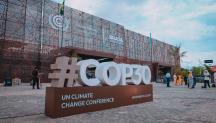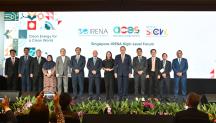

-
-
IRENA and CEM (2015), Renewable Energy Auctions – A Guide to Design.
Copied
/-/media/Files/IRENA/Agency/Publication/2015/Jun/IRENA_Renewable_Energy_Auctions_A_Guide_to_Design_2015.pdf
Copied
Renewable Energy Auctions: A Guide to Design
Newsletter
Auctions for contracts to develop power-generation capacity have emerged as an essential policy instrument for many countries to promote the transition to renewable energy sources and technologies. This six-volume guide from the International Renewable Energy Agency (IRENA) notes more than 60 countries using renewable energy auctions by 2015, mainly in order to attract competition and drive down costs.
Renewable Energy Auctions: A Guide to Design aims to advise policy makers on the implications of different approaches to such auctions. The set – structured around key auction design elements – offers choices and recommendations to support optimal decision-making in different contexts. Auction designs can emphasise cost effectiveness, supply security or socio-economic development objectives.
IRENA’s first study on the topic, Renewable Energy Auctions in Developing Countries (2013), highlighted lessons from developing countries that have implemented auctions, namely Brazil, China, Morocco, Peru and South Africa. The report analysed various design options and provided recommendations to policy makers on the best practices for implementation. Another IRENA report, Adapting Renewable Energy Policies to Dynamic Market Conditions (2014) reiterated the importance of auctions in contemporary electricity markets.
Building on these earlier publications, the guide presents the main trade-offs involved in auction design decisions (e.g. between reducing entry barriers and discouraging underbuilding, or between design simplicity and specifying technology or location preferences) and suggests ways to find the right balance for each jurisdiction.
The first volume summarises the whole set, provides recommendations for policy makers and points out key considerations for successful auction design. Auction design should ensure:
- Increased competition among participating bidders in order to bring prices down; and
- Participation only by bidders with sufficient capacity to implement projects at the contracted price in the given timeframe, as well as contributing to broader development goals.
2. Renewable Energy Policies and Auctions
The second volume contextualises auctions within the larger realm of renewable energy support schemes. It presents an outlook on recent international trends in renewable energy policies, highlighting the role auctions play in many electricity markets worldwide. This analysis is complemented by an overview of the main strengths and weaknesses of energy auctions.
Determining an auction’s demand involves deciding exactly what is to be procured, and under what conditions. Crucial demand-side considerations include:
- Specific demand bands, which define whether and how the total demand is shared among different products;
- The volume of product to be auctioned;
- Periodicity and long-term commitments, which determine whether a pre-set auction schedule is adopted; and
- Responsibility for demand-side commitments, which includes evaluating the factors that assure project developers the creditworthiness of the auctioneer.
4. Auction Design: Qualification Requirements
Qualification requirements determine which suppliers are eligible to participate in an auction, including the conditions every participant must meet and the documentation required prior to the bidding stage. Such requirements commonly relate to:
- Reputation requirements, including the documentation that must be provided about each company bidding, in order to confirm it has adequate capacity to develop the project;
- Technical requirements;
- Production-site selection and documentation;
- Securing grid access; and
- Instruments to promote socio-economic development.
5. Auction Design: Winner Selection Process
Winner selection involves applying the auction’s bidding and clearing rules and awarding contracts to winners. The process includes:
- The bidding procedure, defining how supply-side information is collected for the competitive process;
- Minimum competition requirements, including provisions to ensure participation by multiple, competing bidders;
- Winner-selection criteria, dictating how to rank all bids and select the winner or winners;
- The clearing mechanism, which defines rules for allocating contracts based on marginal bids, in case supply does not meet demand; and
- Payment rules, establishing how the project developer will be remunerated after winning the contract.
6. Auction Design: Sellers’ Liabilities
Sellers’ liabilities encompass responsibilities and obligations spelled out in auction documents. In the case of renewable energy auctions, this critical design element involves:
- A commitment to contract signing;
- The contract schedule;
- Remuneration and financial risks;
- Quantity liabilities;
- Settlement rules, including penalties for underperformance;
- Penalties for delay and underbuilding; and
- Liabilities for transmission delays.
Full Report (12MB)
Chapters
2 - Renewable Energy Policies and Auctions
4 - Auction Design: Qualification Requirements




